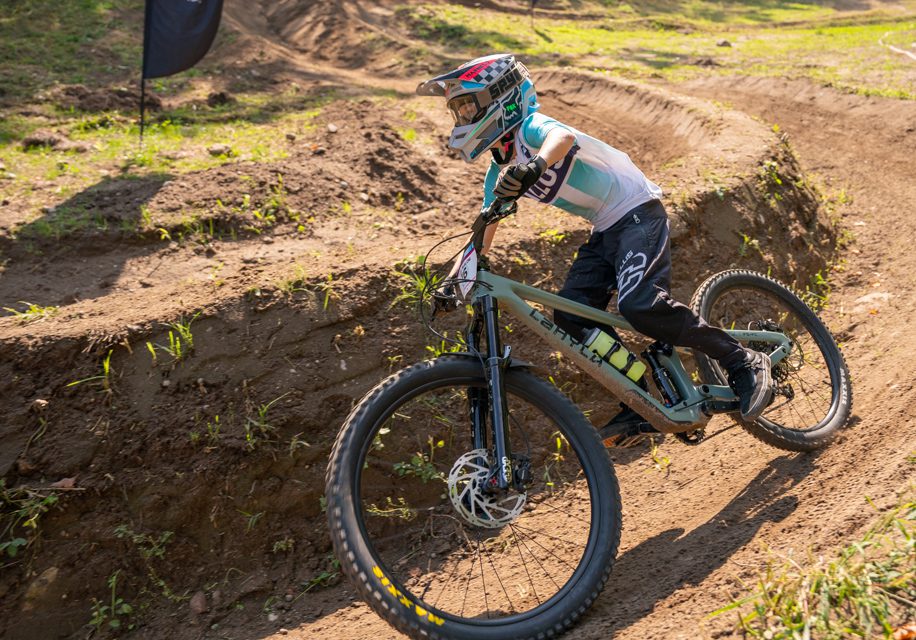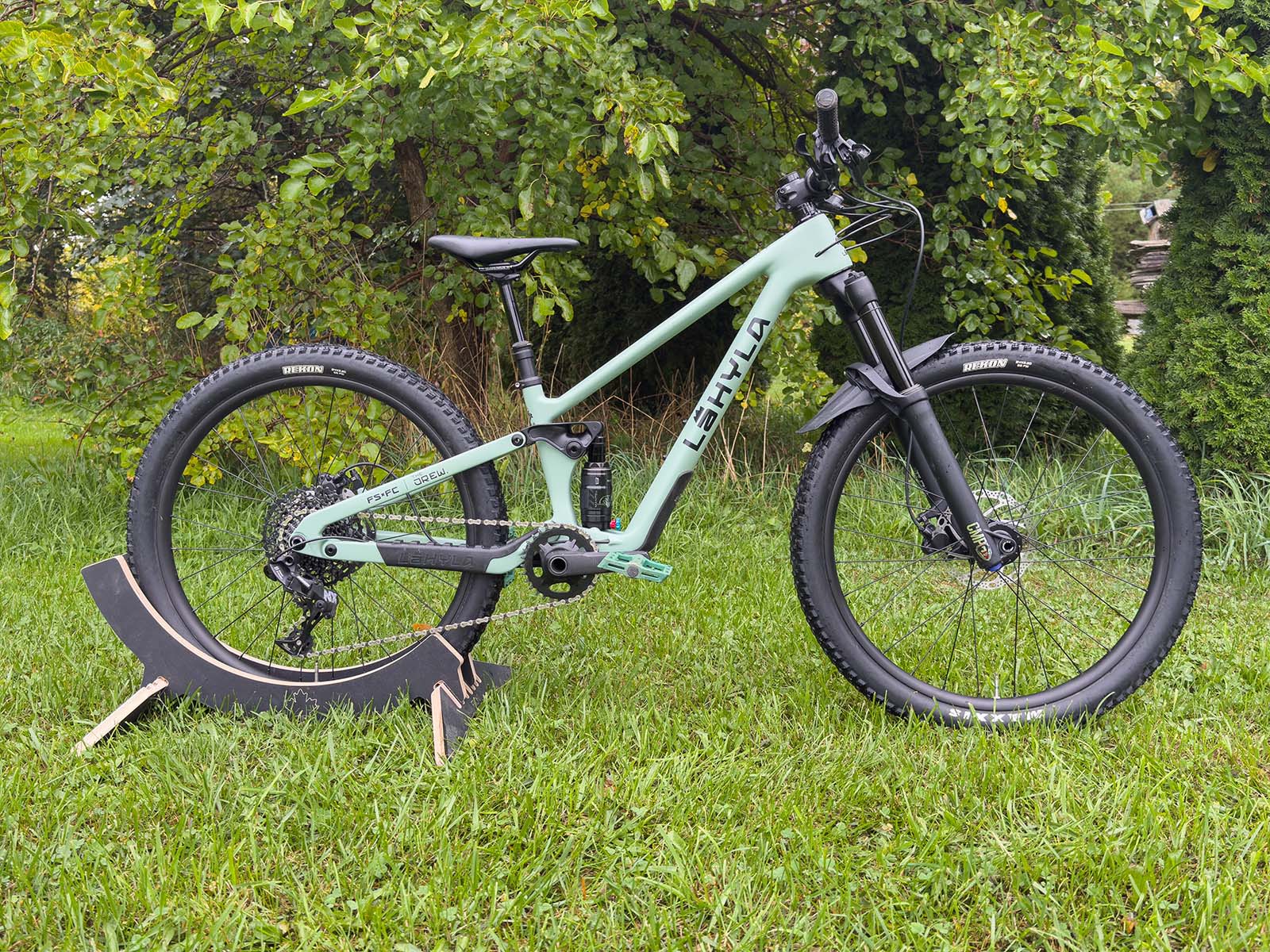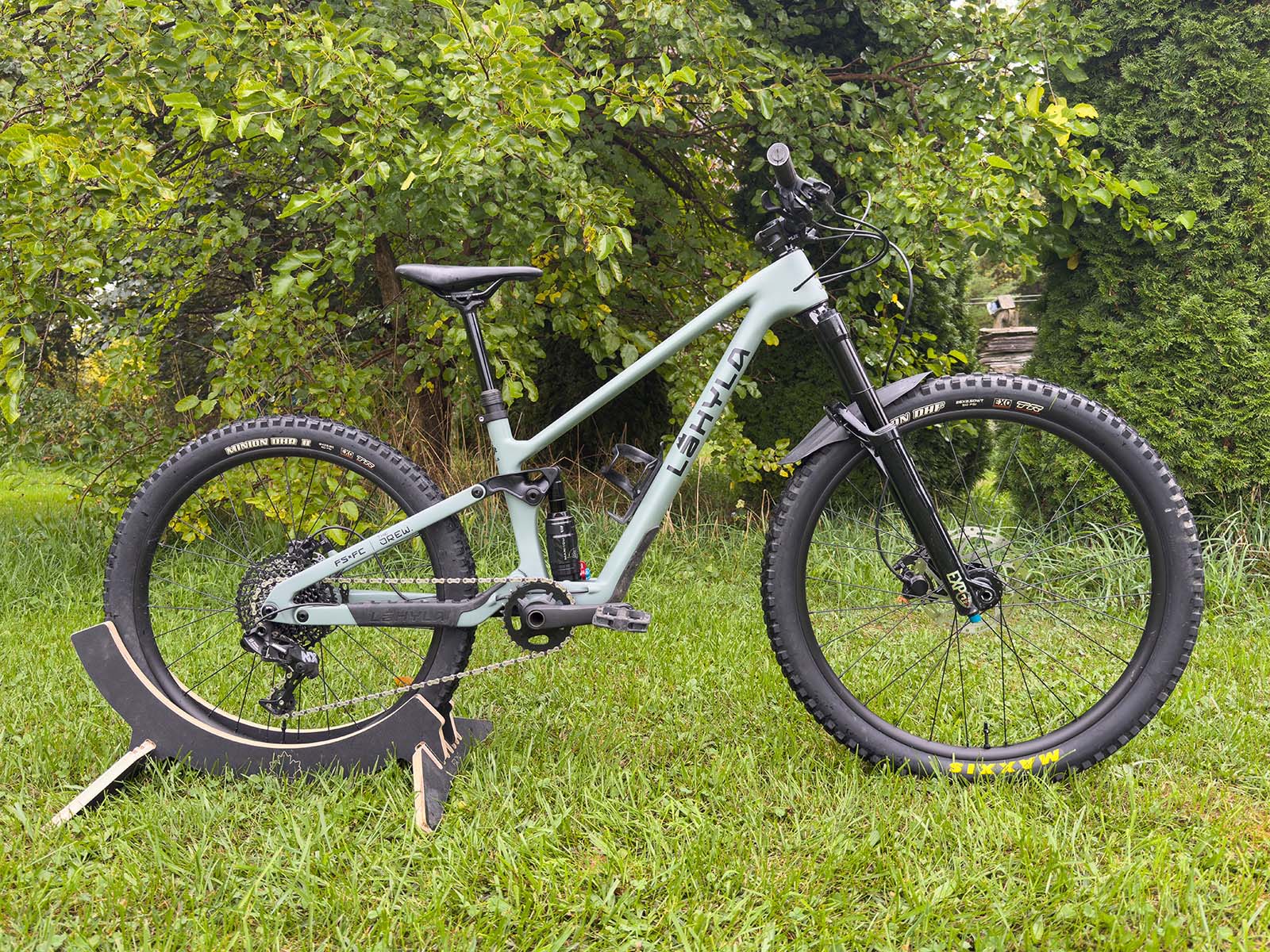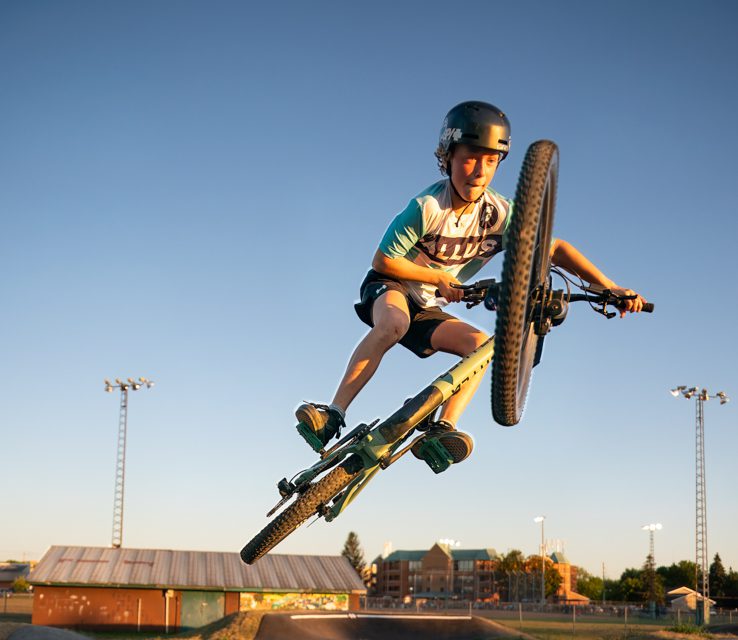Alex Lavallée did not set out to start a bike company. The Montreal industrial designer, who spends his days designing hockey gear for CCM, just wanted a real mountain bike for his kids. Not a tank. Not a toy. A proper trail bike that would let them ride the same kind of terrain he loves. He couldn’t find it. So he built it.
Lahyla’s first two models, the Drew 24 and the Drew Mullet 26×24, promise everything we expect on adult bikes, only sized and tuned for smaller riders. Full carbon, four-bar suspension, Manitou dampers that work for light riders, proportional parts and the small stuff parents care about, like bottle cages that fit a real bottle on a 24.
What we tested and where
We spent time with both bikes and watched 11-year-old Colin Konings absolutely rip the Drew 24 at the local pump track. Then he tried riding it at Horseshoe Valley bike park during a summer camp there. He loved it then graduated to the Drew Mullet. Colin was able to lift it onto the chairlift by himself; something he couldn’t do with the rental bikes he’d been riding. He raced it in the dual slalom race at Horseshoe Valley Bike Fest and got fifth. And by the end of the day he was jumping the slopestyle course (left over from Crankworx) that featured nine foot lips and 19 foot gaps.
“It was awesome,” Colin said. “Because it was so light. The brakes were phenomenal.”
His dad, Kevin, watched the progression in real time.
“He seemed very comfortable on the bike and just whipping the thing around,” Kevin said. “I don’t know if it was the weight, the geometry or the way the suspension was set, but he had a lot of confidence.”
 The Drew 26X24 on the dual slalom track. Colin Field photo.
The Drew 26X24 on the dual slalom track. Colin Field photo.
On-trail feel
That’s the first thing you notice on these bikes; the weight. The Drew 24 is 24.5 pounds. The full-carbon frame makes lift-and-carry moments simple, but more important, it lets smaller riders move the bike in the air and change lines mid-corner. Colin cleared Party Train’s biggest jump on the first go. He actually over cleared it, then settled into it like he had been riding the feature all summer.
Grip and braking impressed our young tester. Narrower kid grips took a minute to adjust to, then felt normal. The lever reach is actually small-hand small, not “almost there” small. Both bikes come with short droppers, which Colin used constantly on steeps and roll-downs.
Suspension that finally wakes up for light riders
Lavallée and the engineers over at Faction Bike Studio didn’t just shrink modern bike geometry. They reworked leverage ratios and kinematics so the shock starts moving under a 60- to 90-pound rider. That matters. Instead of packing up and skipping across braking bumps, the rear wheel tracks. Manitou tunes are intentionally light, and both ends show usable adjustment range for featherweight riders.
The Drew 24 has 120 mm front / 115 mm rear and keeps pump-track pop without killing efficiency. The Drew Mullet has 140 / 130, adding travel for bike-park days and steeper lines without feeling like a couch.
Fit and spec for small humans
This is where Lahyla separates from the pack. There are 127 mm cranks on the 24. Short-reach levers. Small diameter handlebars. Droppers that kid hands can operate. And a standover that actually lets a kid bail. The bottom bracket feels planted rather than tippy. And yes, there is a bottle cage on the small frame.
“I had the bottle all day,” Colin said. “I’d take it off on the chair or sip on the hill.”
It sounds minor until you realize most 24s either delete cages or make you play Tetris with tiny bottles. Just like us, kids don’t want to wear CamelBaks. And parents don’t want to carry everyone’s bottle.
Geometry that makes progression feel normal
Colin could manual the Drew 24 easily and corner well with that low-BB planted feeling. The mullet adds stability without dulling pop. He rode a couple other rentals the same week. Both had droppers, but the Lahyla felt livelier under him and easier to place on lips. That tracks with what we saw on course.
Designed in Canada, built to last
The frames are made at a top carbon factory in Asia. Prototypes lived under kids for more than a year. Spare parts are slated for the website to keep bikes rolling for the next rider. Lahyla’s argument is simple: buy once, let your kid progress, then resell for strong value.
Price and value
This is the sticking point. The Drew 24 is $3,999. The Drew Mullet is $4,199. That is real money for a bike a kid might outgrow in one season.
“High for sure,” Kevin said. “I believe in good bikes, but for a kid’s bike it’s pretty up there.”
We agree it is a premium purchase. The counterpoint is performance and resale. If your kid is riding park, racing enduro or jumping slopestyle features, the Lahyla unlocks trails that lesser bikes shut down. If you can sell it in a year or two for close to what you paid, the math starts to look like an expensive rental with a lot more smiles in between.
 The Drew 24. Colin Field photo.
The Drew 24. Colin Field photo.
Who it’s for
•Families with a kid who lives at the bike park or wants to
•Parents tired of “good enough” kids’ suspension
•Riders in the 115–135 cm range for the 24, 135–156 cm for the mullet
•Anyone who values light weight, correct fit and real braking for small hands
Availability
Lahyla is selling online now and through select shops in Quebec, with Ontario and the West Coast coming next.
 The Drew 26×24. Colin Field photo.
The Drew 26×24. Colin Field photo.
The verdict
Lahyla built the kids’ bikes I wish existed five years ago when my son was 10. They are light, genuinely kid-tuned and come with the right parts out of the box. We watched an 11-year-old go from curious to clearing man-sized slopestyle jumps. That’s the entire point.
If your rider is pushing limits and you have the budget, the Drew 24 and Drew Mullet are incredible progression tools. Yes there are other companies building decent kid-sized bikes; but the carbon frame makes these bikes seriously lightweight. And just like for us grown ups, the lighter the bike (within reason) the easier they are to ride.
If you are more rail trail than chairlift, look elsewhere. For little shredders with big lines in mind, Lahyla is getting it right.

